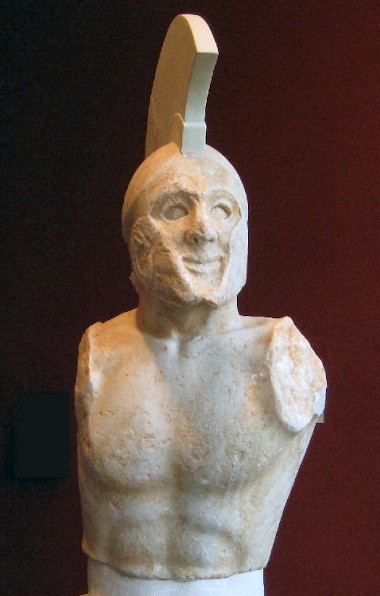Eurypontids and Agiads
Eurypontids and Agiads: names of the two royal dynasties in Sparta.

One of the peculiarities of the constitution of ancient Sparta is the fact that it had not one, but two kings, who belonged to two dynasties. This needed an explanation, and fortunately, the Greek researcher Herodotus of Halicarnassus offers a story that, although undoubtedly folkloristic, is entertaining:
The wife of [the legendary Spartan king] Aristodamus, whose name was Argeia [...] brought forth twins; and Aristodamus lived but to see his children and then ended his life by sickness. So the Spartans of that time resolved according to established custom to make the elder of the children their king; but they did not know which of them they should take, because they were like one another and of equal size; and when they were not able to make out, or even before this, they inquired of their mother; and she said that even she herself did not know one from the other. She said this, although she knew in truth very well, because she desired that by some means both might be made kings.
The Spartans then were in a strait and sent to Delphi to inquire what they should do in the matter. And the Pythian prophetess bade them regard both children as their kings, but honor most the first in age. The prophetess, they say, thus gave answer to them; and when the Spartans were at a loss none the less how to find out the elder of them, a Messenian whose name was Panites made a suggestion to them: he suggested that they should watch the mother and see which of the children she washed and fed before the other; and if she was seen to do this always in the same order, then they would have all that they were seeking and desiring to find out, but if she too was uncertain and did it in a different order at different times, it would be plain to them that even she had no more knowledge than any other, and they must turn to some other way.
The Spartans followed this and watched the mother of the sons of Aristodamus and found that she gave honor thus to the first-born both in feeding and in washing; for she did not know with that design she was being watched. They took therefore the child which was honored by its mother and brought it up as the first-born in the public hall, and to it was given the name of Eurysthenes, while the other was called Procles.
These, when they had grown up, both themselves were at variance, they say, with one another, though they were brothers, throughout the whole time of their lives, and their descendants also continued after the same manner.note
This story must have been invented to explain the odd dual kingship. The names of the dynasties were Agiads and Eurypontids, after Agis and Euryphon, the sons of the twin Eurysthenes and Procles. Elsewhere, Herodotus offers the family trees of the two Spartan royal heroes of the Persian War, Leonidas and Leotychides. It is highly schematic, and it must be noted that there are other lists (e.g., by Pausanias).
|
|
||
|
|
||
|
|
||
|
|
||
|
|
||
|
|
|
|
|
|
|
|
|
|
|
|
|
|
|
|
|
|
|
|
|
|
|
|
|
|
|
|
|
|
|
|
|
|
|
|
|
|
|
|
|
|
|
|
|
|
|
|
|
|
|
|
|
|
|
|
|
|
|
|
|
|
|
Most of these names are just that: names. However, the last four or five generations appear to be real, and it is possible to fix a chronology of Sparta's ruling houses after the mid-sixth century.
|
|
|
|
|
|
|
|
|
|
|
|
|
|
|
|
|
|
|
|
|
|
|
|
|
|
|
|
|
|
|
|
|
|
|
|
|
|
|
|
|
|
|
|
|
|
|
|
|
|
|
|
|
|
|
|
|
|
|
|
|
|
|
|
|
|
|
|
|
|
|
|
|
|
|
|
|
|
|
|
|
|
|
|
|
|
|
|
|
|
|
|
|
|
|
|
|
|
|
|
|
|
|
|
|
|
|
|
|
|
|
|
|
|
|
|
|
|
|
|
|
|
|
|
|
|
|
|
|
|
|
|
|
|
|
|
|
|
|
|
|
|
|
|
|
|
|
|
|
|
|
|
|
|
|
|
|
|
|
|
|
|
|
|
|
|
|